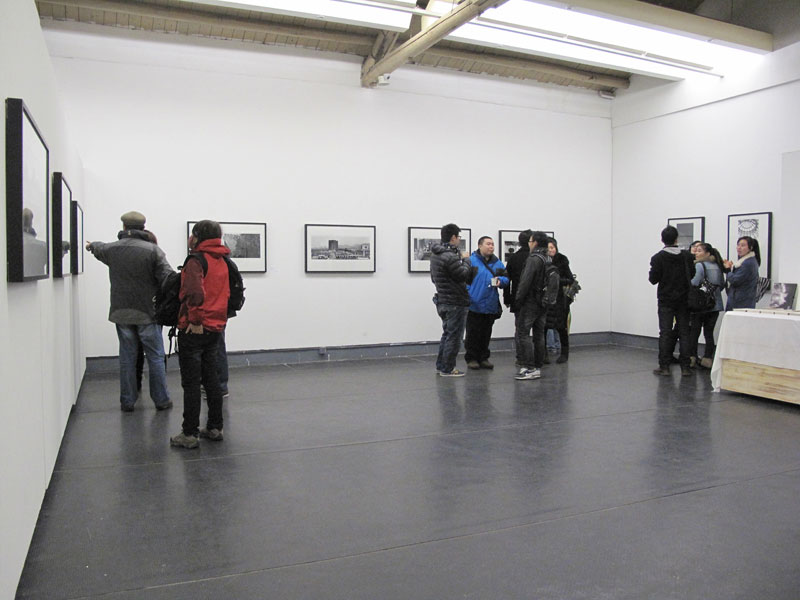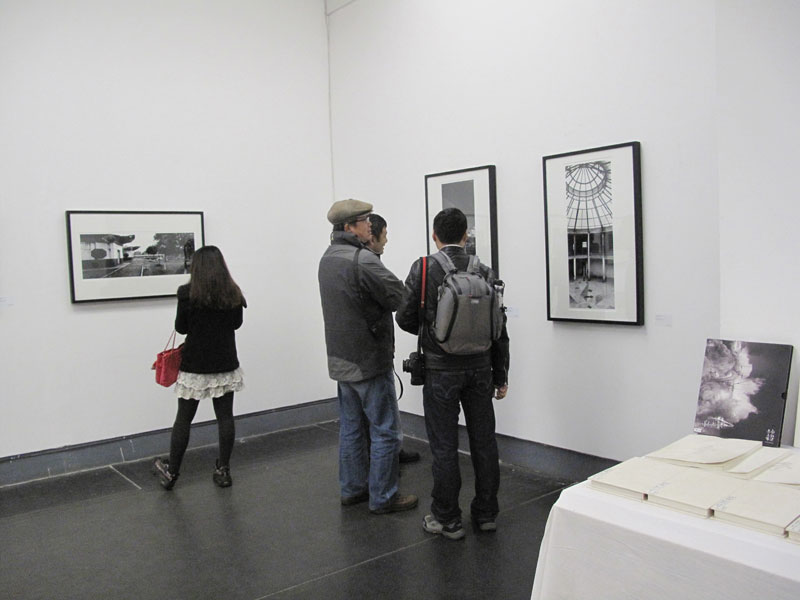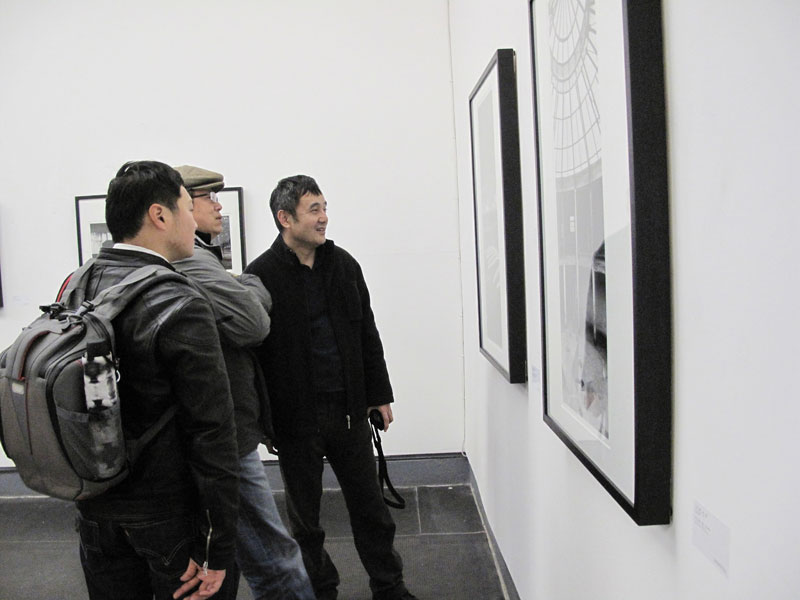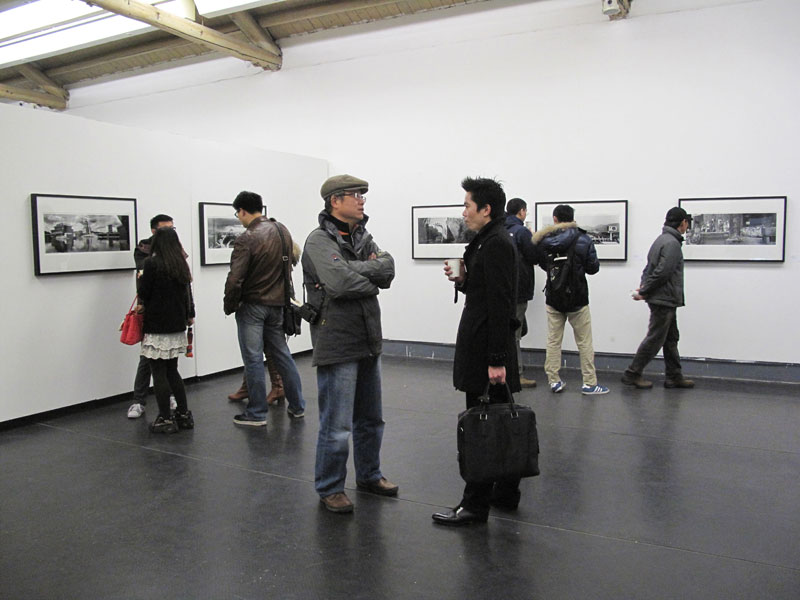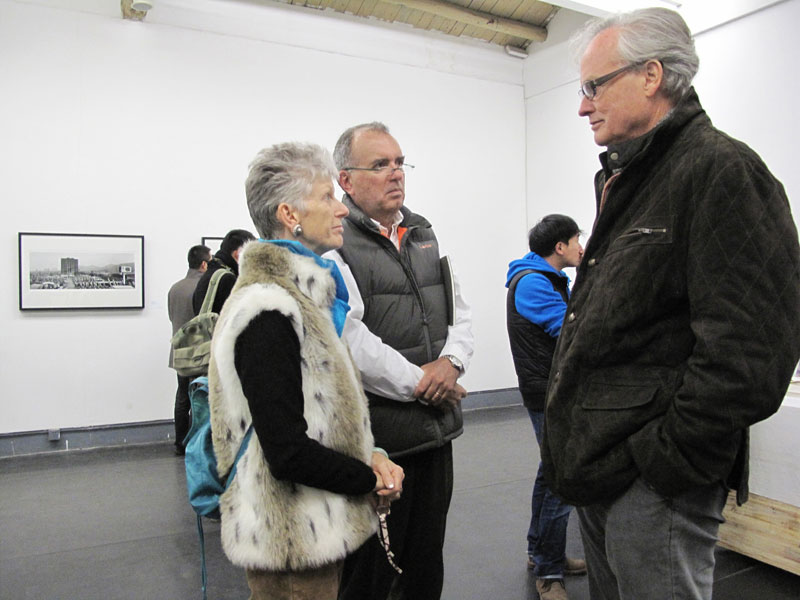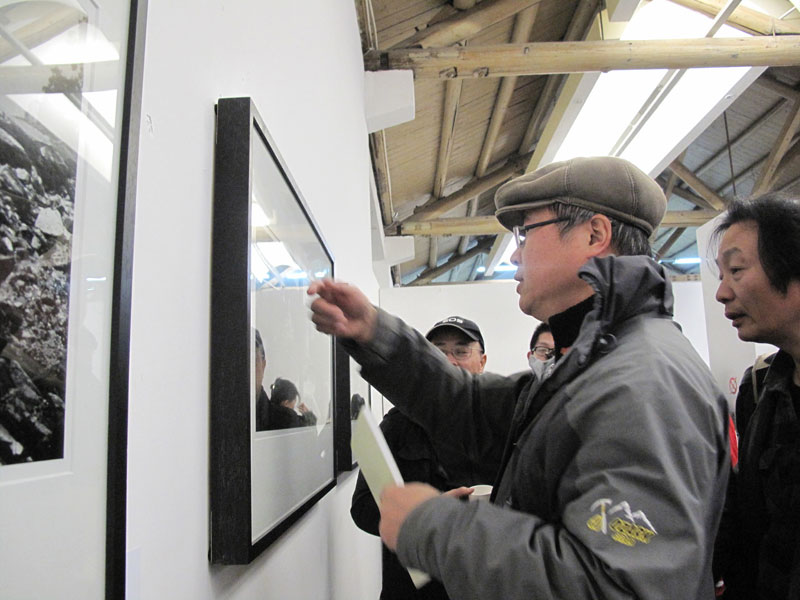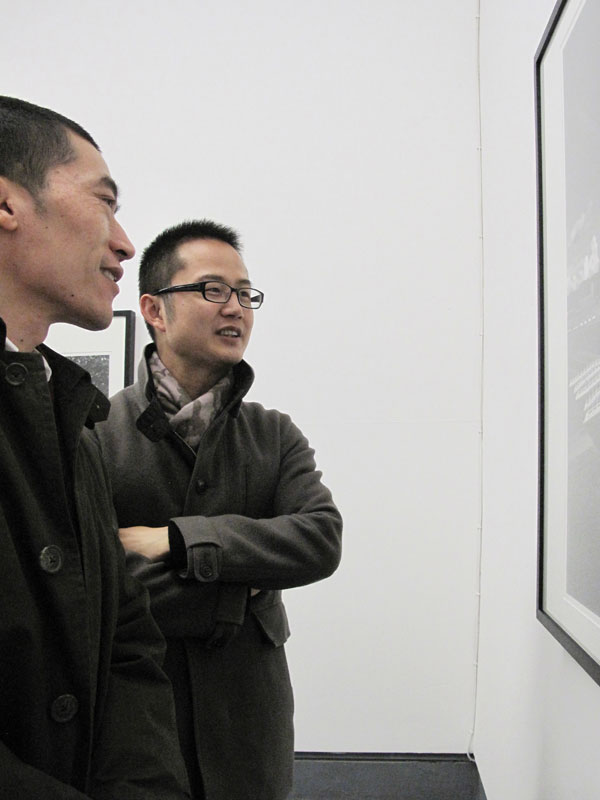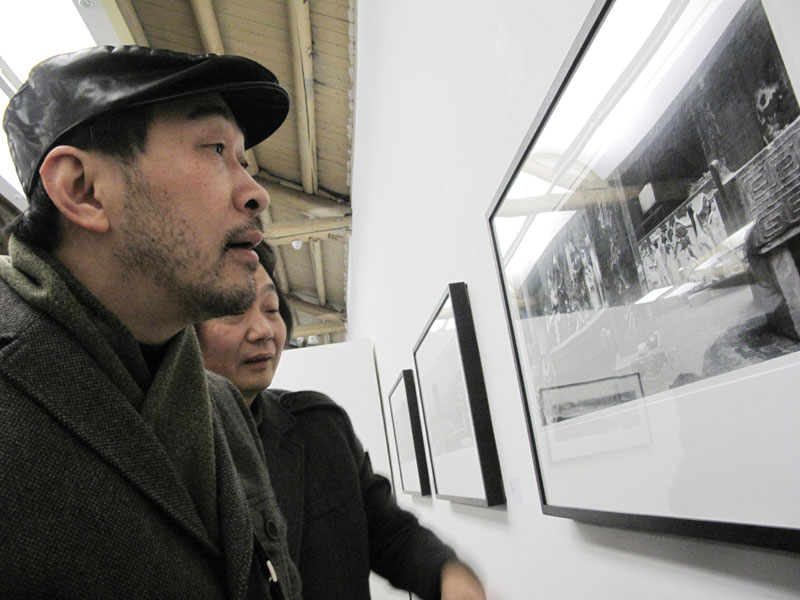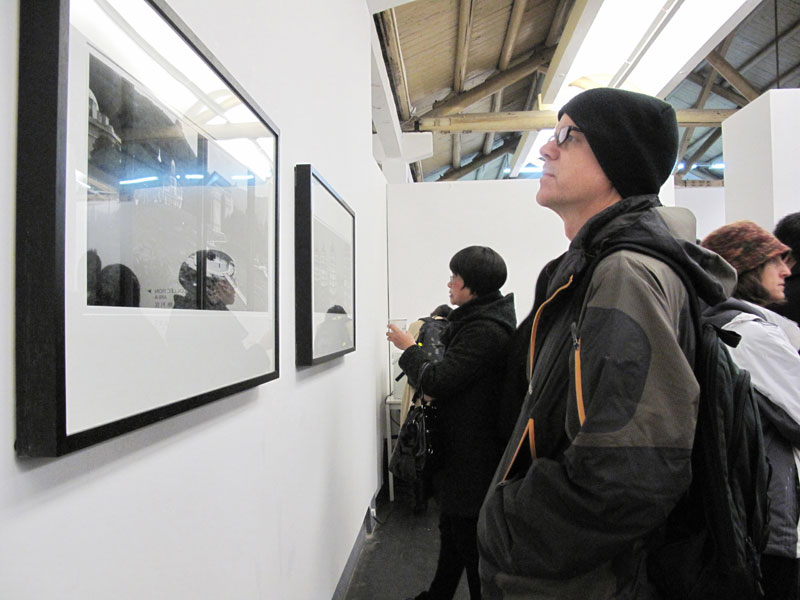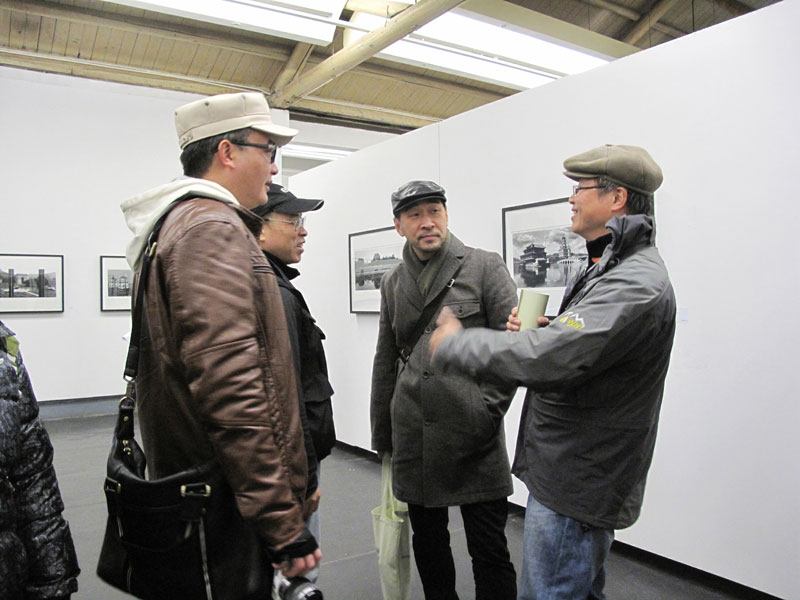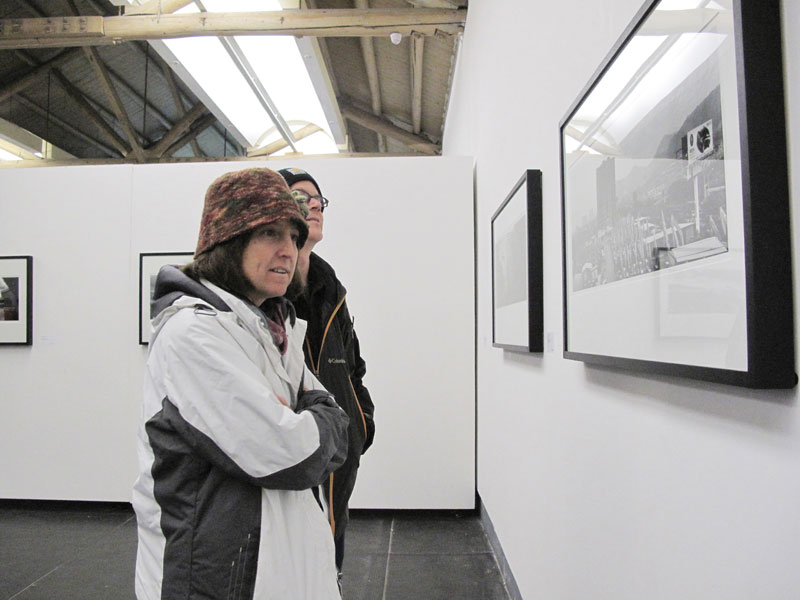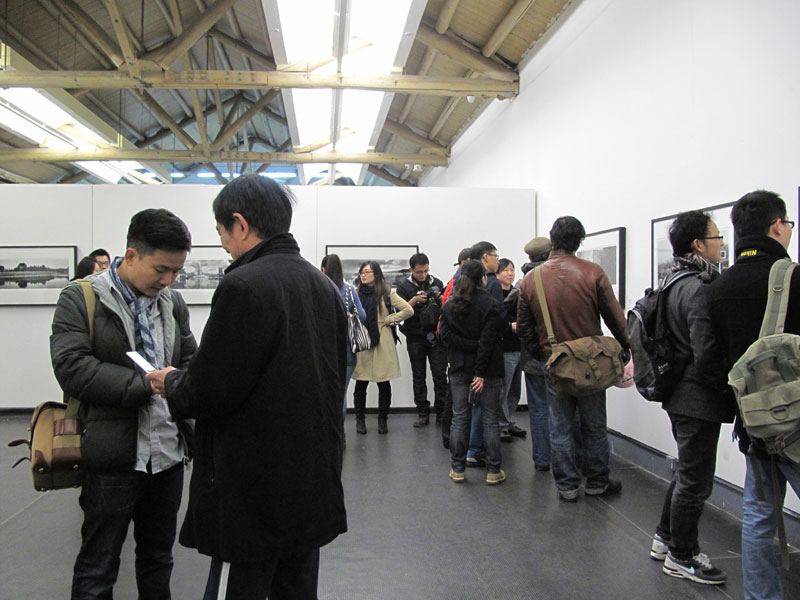From “organic absurdity” to “inorganic absurdity” - a new thinking on Zhou Ming"s new works
by Gu Zheng
This is my third time to write on Zhou Ming"s photography; so to say that at least I know a bit about his work. But through his work, I become less and less familiar with the country through his lens. And the works Zhou Ming presents in this photography exhibition are the real scenes of this country which has been changed beyond recognition for a very long time. During the rapid transition of the contemporary China"s real landscape, a combination of natural landscape and social landscape, to a “crazy landscape”, he seizes every opportunity to search for these charming and at the same time confusing landscapes and presents them to the public.
I think the most obvious change of Zhou Ming over the past more than 10 years is to present from narrative to non-narrative surreal scenes. At least I feel so. It’s not only profound change of real scenes but also definite change of photographer Zhou Ming. Meanwhile, I can feel strongly that his consciousness of the reality becomes deeper, which of course includes the deepening of the theme.
If before the earlier series SHANGHAI: AN ALTERNATIVE VIEW, the surreal scenes are mainly about humor and try to find the amazing beauty of world by presenting a certain degree of absurd scenes, the other series after SHANGHAI: AN ALTERNATIVE VIEW is rapier thrust to the impenetrable world.
In the turning point series SHANGHAI: AN ALTERNATIVE VIEW and the new exhibits, the absurd reality has profound changes. More important, the absurdity has widely changed in essence. Before SHANGHAI: AN ALTERNATIVE VIEW, the absurdity in people’s activities is painstakingly salvaged, discovered and presented by his unique vision from the reality. Ever since SHANGHAI: AN ALTERNATIVE VIEW, a certain sense of absurdity in the photos often happens on the objects and spaces of the people’s conscious activities, such as the urban landscapes in Shanghai, as well as the present exhibits of the urban and rural landscapes all over China.
In contemporary China, people suppress and transform the urban spaces excessively for the lust and interest, which happens to create opportunities and actual subjects for Zhou Ming to prove the absurdity of the world and human being. During such process, he systematically extended his eyes from Shanghai to the whole nation, searching for opportunities and actual scenes to prove the absurdity of the world. Meanwhile, we find that this is the fundamental changing process of the world’s absurdity. This is a transition process from “organic absurdity” presenting the absurd relationship between human and the world through activities to “inorganic absurdity” presenting the result of human purpose. When presenting “inorganic absurdity”, the absurdity is related with desolation; when it comes to “organic absurdity” period, human doesn’t belong to his critique scope. Then he was fascinated by a visual magic to present absurdity. But at “inorganic absurdity” period, he created “crazy landscape” by criticizing human purpose, desire and interest, and finally made critical and ironic judgment on human. He presents the “crazy landscape” by “ironic landscape”, which is the change of photographer’s world view caused by the crazy changes of the world. I believe this is inevitable for photographer Zhou Ming. I don’t think that Zhou Ming’s painstaking effort to find “inorganic absurdity” in large areas of China is just for some visual effects. It is his serious visual reaction as a conscientious photographer toward the transformation of the contemporary China’s landscape to the “crazy landscape”.
In particular, juxtaposition is the main technique in his works. Originally, juxtaposition is re-arranging images to the same plane dimension. In Zhou Ming’s photography, juxtaposition is the arrangement in the composition of the objects and scenes in different depth of field to achieve a virtual plane through means of photography. He arranges all kinds of objects on the same picture plane to point out their contradiction, opposite and misplacement in order to express his view on the world, which is a successful visual tactics to present the “inorganic absurdity”.
The surreal absurd scenes transformed by his eyes become an important way to present the absurd world and many windows to peep at the reality. Zhou Ming carries out the surrealism into his photographic practice as a methodology to look at the world. In a sense, Zhou Ming seriously practices surrealism as a means of critical realism, which becomes his personal photography style. Meanwhile, it reminds us how to activate the critical element in the surreal historical heritage and make it a new way to view today’s landscape, which still has realistic meaning especially for today when “crazy landscape” still exists.
Translation: Fan Chen
翻 译:范 晨
2012.11
by Gu Zheng
This is my third time to write on Zhou Ming"s photography; so to say that at least I know a bit about his work. But through his work, I become less and less familiar with the country through his lens. And the works Zhou Ming presents in this photography exhibition are the real scenes of this country which has been changed beyond recognition for a very long time. During the rapid transition of the contemporary China"s real landscape, a combination of natural landscape and social landscape, to a “crazy landscape”, he seizes every opportunity to search for these charming and at the same time confusing landscapes and presents them to the public.
I think the most obvious change of Zhou Ming over the past more than 10 years is to present from narrative to non-narrative surreal scenes. At least I feel so. It’s not only profound change of real scenes but also definite change of photographer Zhou Ming. Meanwhile, I can feel strongly that his consciousness of the reality becomes deeper, which of course includes the deepening of the theme.
If before the earlier series SHANGHAI: AN ALTERNATIVE VIEW, the surreal scenes are mainly about humor and try to find the amazing beauty of world by presenting a certain degree of absurd scenes, the other series after SHANGHAI: AN ALTERNATIVE VIEW is rapier thrust to the impenetrable world.
In the turning point series SHANGHAI: AN ALTERNATIVE VIEW and the new exhibits, the absurd reality has profound changes. More important, the absurdity has widely changed in essence. Before SHANGHAI: AN ALTERNATIVE VIEW, the absurdity in people’s activities is painstakingly salvaged, discovered and presented by his unique vision from the reality. Ever since SHANGHAI: AN ALTERNATIVE VIEW, a certain sense of absurdity in the photos often happens on the objects and spaces of the people’s conscious activities, such as the urban landscapes in Shanghai, as well as the present exhibits of the urban and rural landscapes all over China.
In contemporary China, people suppress and transform the urban spaces excessively for the lust and interest, which happens to create opportunities and actual subjects for Zhou Ming to prove the absurdity of the world and human being. During such process, he systematically extended his eyes from Shanghai to the whole nation, searching for opportunities and actual scenes to prove the absurdity of the world. Meanwhile, we find that this is the fundamental changing process of the world’s absurdity. This is a transition process from “organic absurdity” presenting the absurd relationship between human and the world through activities to “inorganic absurdity” presenting the result of human purpose. When presenting “inorganic absurdity”, the absurdity is related with desolation; when it comes to “organic absurdity” period, human doesn’t belong to his critique scope. Then he was fascinated by a visual magic to present absurdity. But at “inorganic absurdity” period, he created “crazy landscape” by criticizing human purpose, desire and interest, and finally made critical and ironic judgment on human. He presents the “crazy landscape” by “ironic landscape”, which is the change of photographer’s world view caused by the crazy changes of the world. I believe this is inevitable for photographer Zhou Ming. I don’t think that Zhou Ming’s painstaking effort to find “inorganic absurdity” in large areas of China is just for some visual effects. It is his serious visual reaction as a conscientious photographer toward the transformation of the contemporary China’s landscape to the “crazy landscape”.
In particular, juxtaposition is the main technique in his works. Originally, juxtaposition is re-arranging images to the same plane dimension. In Zhou Ming’s photography, juxtaposition is the arrangement in the composition of the objects and scenes in different depth of field to achieve a virtual plane through means of photography. He arranges all kinds of objects on the same picture plane to point out their contradiction, opposite and misplacement in order to express his view on the world, which is a successful visual tactics to present the “inorganic absurdity”.
The surreal absurd scenes transformed by his eyes become an important way to present the absurd world and many windows to peep at the reality. Zhou Ming carries out the surrealism into his photographic practice as a methodology to look at the world. In a sense, Zhou Ming seriously practices surrealism as a means of critical realism, which becomes his personal photography style. Meanwhile, it reminds us how to activate the critical element in the surreal historical heritage and make it a new way to view today’s landscape, which still has realistic meaning especially for today when “crazy landscape” still exists.
Translation: Fan Chen
翻 译:范 晨
2012.11
